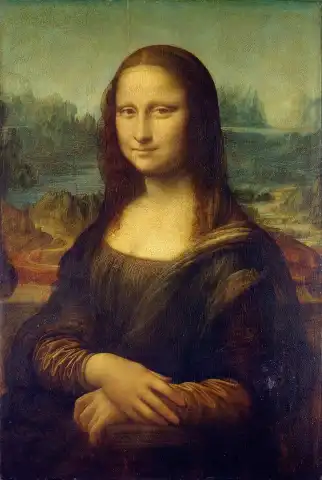

Hand painted reproductions of Tawaraya Sōtatsu
Tawaraya Sōtatsu: A Pioneering Master of Japanese Art
Early Life and Education
Tawaraya Sōtatsu (c. 1590–1643) was a Japanese painter and designer during the early Edo period, who played a significant role in the development of the Rinpa school of painting. Little is known about Sōtatsu's early life, but it is believed he was born in Kyoto, where he was exposed to various traditional Japanese art forms, particularly the Kano school and early ukiyo-e styles. His works reflect the elegance and refinement of the Edo period, a time when Japan was emerging from centuries of conflict and beginning to develop its distinctive artistic identity.
Sōtatsu's early training and artistic education are somewhat mysterious, but it is clear that he was deeply influenced by the rich traditions of Japanese ink painting and decorative design. His skillful use of brushwork and vibrant compositions led to his eventual recognition as a pioneering figure in Japanese painting, particularly for his contributions to the Rinpa school.
Artistic Style and Development
Tawaraya Sōtatsu is best known for his development of the Rinpa style, a school of painting that emphasizes beauty, elegance, and the use of natural subjects to evoke a sense of grace and poetic feeling. His work blended traditional Japanese painting techniques with a highly decorative and symbolic approach, often incorporating elements of calligraphy and design. His style is characterized by bold brushstrokes, fluid compositions, and the incorporation of gold leaf and other materials to enhance the visual impact of his works.
One of Sōtatsu’s most famous contributions to Japanese art was his work on folding screens, which were highly popular during the Edo period. He developed innovative designs for these screens, often using a combination of dynamic landscapes, floral motifs, and mythical creatures. His compositions were both visually striking and imbued with symbolic meaning, making them highly sought after by the elite of the time.
Sōtatsu's use of gold and silver leaf in his paintings was particularly groundbreaking. He was one of the first artists to incorporate such materials into his compositions in a way that enhanced the overall visual impact, rather than simply serving as decoration. This technique would later become a hallmark of the Rinpa school and inspire generations of artists.
Themes and Significance
The themes of Tawaraya Sōtatsu’s work were deeply rooted in the natural world, drawing inspiration from the changing seasons, flowers, birds, and mythical creatures. His approach to nature was both stylized and symbolic, capturing not just the external appearance of his subjects, but also their deeper meaning. For example, his famous screen paintings often depicted scenes of cranes in flight or chrysanthemums in bloom, which were symbolic of longevity, purity, and beauty.
Sōtatsu's work is also notable for its emphasis on simplicity and harmony. His compositions are often minimalistic, using large expanses of blank space to create a sense of balance and calm. This restraint in design allowed the central figures in his paintings to shine, drawing the viewer's attention to their graceful forms and movements.
Another key aspect of Sōtatsu’s art was his integration of calligraphy into his paintings. His brushwork was not only precise but also expressive, combining the fluidity of painting with the rhythm of written characters. This fusion of painting and calligraphy added a layer of cultural depth to his work, highlighting the importance of words and images working together to convey meaning.
Achievements and Influence
Throughout his career, Tawaraya Sōtatsu achieved great success and recognition for his contributions to Japanese painting. His work was highly valued by the aristocracy, particularly the samurai class, who appreciated his ability to combine traditional Japanese techniques with a fresh, modern sensibility. His innovative use of gold and silver leaf in his paintings, as well as his dynamic compositions, set him apart from other artists of the time.
Sōtatsu's influence extended beyond his own lifetime. He is often considered the founder of the Rinpa school, a movement that would go on to shape Japanese art for centuries. His innovative use of space, color, and materials would inspire later artists such as Ogata Kōrin, who would further develop the style and bring it to new heights. The Rinpa school emphasized a combination of decorative art with symbolic themes, and Sōtatsu’s contributions were instrumental in shaping this artistic philosophy.
Although Sōtatsu was not as widely known outside of Japan during his lifetime, his work has become highly regarded in the years since his death. His paintings are now considered some of the most iconic examples of early Edo-period Japanese art, and his influence can be seen in the works of many later artists.
Legacy
Tawaraya Sōtatsu’s legacy is one of innovation and elegance. His pioneering role in the development of the Rinpa school helped define the aesthetic direction of Japanese art during the Edo period and beyond. His work continues to be celebrated for its exquisite brushwork, rich use of color and gold leaf, and deep connection to nature.
Today, Sōtatsu’s works are housed in some of the most prestigious museums and collections around the world, including the Tokyo National Museum and the Kyoto National Museum. His paintings, particularly his folding screens, are considered masterpieces of Japanese art and are highly valued by collectors and art lovers alike.
Sōtatsu’s influence continues to resonate in contemporary Japanese art, where his emphasis on simplicity, elegance, and the fusion of calligraphy and painting still serves as a model for artists seeking to capture the essence of nature and beauty.
Where to Find Reproductions of Tawaraya Sōtatsu’s Art
For those looking to bring the elegance of Tawaraya Sōtatsu’s work into their own homes, high-quality oil painting reproductions are available. These reproductions allow collectors to experience the sophisticated compositions and decorative beauty of Sōtatsu’s paintings, from his serene landscapes to his dynamic floral and animal motifs. Acquiring a reproduction of Sōtatsu’s work offers a chance to own a piece of Japan’s artistic heritage that combines tradition with innovation.
Imagine owning an original-style painting by one of the greatest artists in history. At POD, we offer you the chance to make this dream a reality. Each canvas is faithfully reproduced down to the smallest detail, allowing you to experience the beauty of the artist’s vision in your own home.
Our reproductions are crafted by experienced painters using the finest materials and time-honored methods. We are committed to delivering works of exceptional quality that will inspire and bring joy to your family for generations to come.




